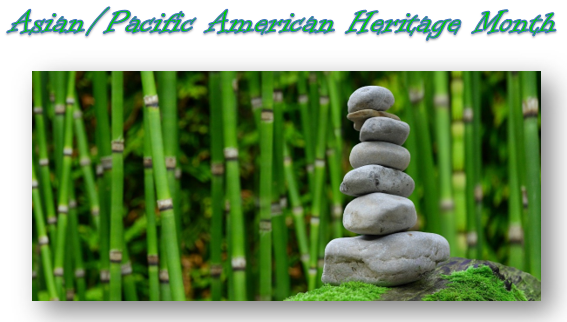
Asian/Pacific American Heritage Month celebrates Asians and Pacific Islanders in the United States. This includes all the Asian continents and Pacific islands of Melanesia (New Guinea, New Caledonia, Vanuatu, Fiji and the Solomon Islands), Micronesia (Marianas, Guam, Wake Island, Palau, Marshall Islands, Kiribati, Nauru and the Federated States of Micronesia) and Polynesia (New Zealand, Hawaiian Islands, Rotuma, Midway Islands, Samoa, American Samoa, Tonga, Tuvalu, Cook Islands, French Polynesia and Easter Island). Beginning as Asian/Pacific American Heritage Week in 1979, Congress passed a law declaring May as Asian/Pacific American Heritage Month in 1992. There are more than 15 million people of Asian/Pacific Island descent in the United States today.
May was chosen to recall the first immigration of Japanese people to the United States on May 7, 1943 and to commemorate the anniversary of the completion of the Transcontinental Railroad on May 10, 1869, because of the abundance of Chinese workers on the railroad.
The National Archives, Library of Congress, National Gallery of Art, the National Endowment for the Humanities and the Smithsonian Asian Pacific American Center are among the institutions that observe Asian/Pacific Islander Heritage Month with special exhibits. See these websites and a central website, https://asianpacificheritage.gov/about/, for abundant information on the Asian and Pacific Island heritage in the United States.
Resources:
Asian Pacific Heritage Month
Library of Congress Asian-Pacific Heritage
Smithsonian Asian Pacific Heritage
National Archives Asian Pacific Heritage
https://www.nga.gov/ (National Gallery)
www.neh.gov (National Endowment for the Humanities)


